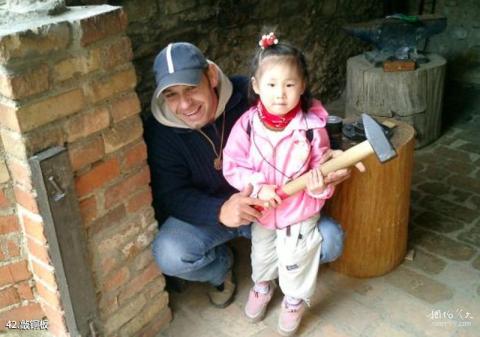
Introduction to knocking copper plates: From the Qing Dynasty to the Republic of China, people in Pinghu called ancient coins with holes "copper tin" and those without holes "copper plates". Generally, copper plates are thicker and larger than copper. There were two main types of copper plates that were common before the 1950s: one was made during the Guangxu period of the Qing Dynasty, with a dragon on one side and "Guangxu Yuanbao" on the other; the other was made in the early Republic of China, with a crossed two-sided republic. The flag has the word "Shiwen" on one side. Later, copper plates withdrew from the currency market and paper money was used instead. People played copper plates as games, especially children.
Copper plate knocking is also called "copper plate rolling" or "copper plate stacking". There is no limit to the number of participants. First, a tilted brick is placed on the ground, and then the participants stand next to the inclined brick one by one, holding the copper plate in their right hand. Knock down the bricks sideways, and let the copper plate roll to the distance with the help of the inclined bricks. The farther the roll, the better. When all the participants have finished rolling, the farthest one will be the "head house", and the following are the second houses in order. , three...
